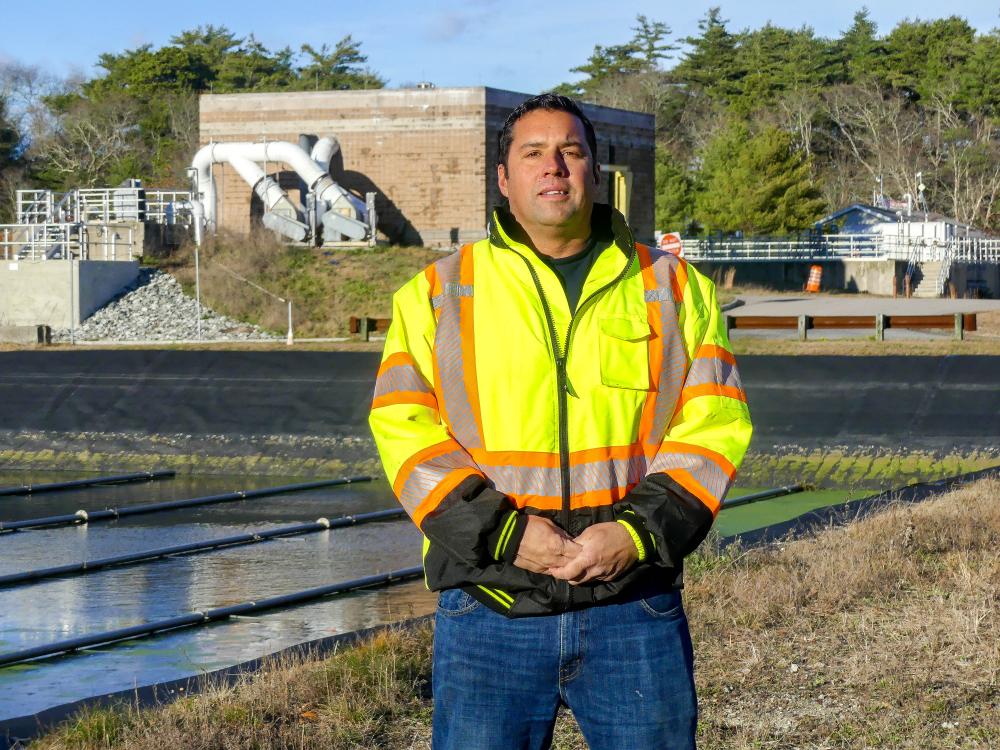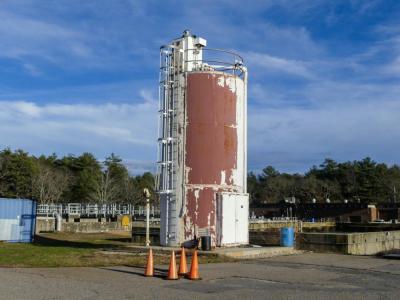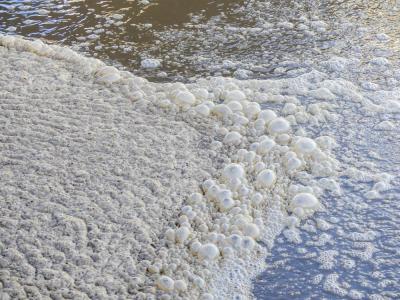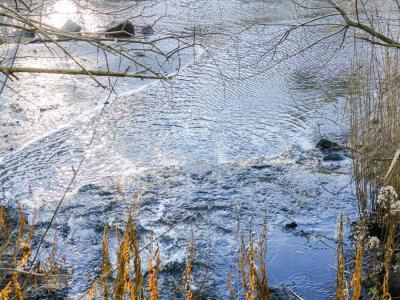The ‘connoissewer’: New director talks goals for sewer plant

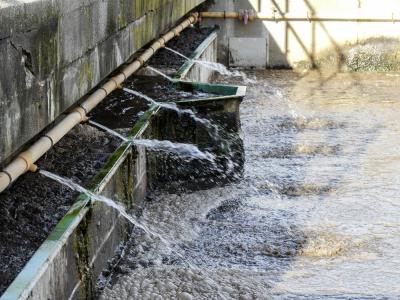
The Water Pollution Control Facility, located at 6 Tony’s Lane, processes 1.56 million gallons per day, which is brought in by 61 miles of piping. It is also currently only running at half staff, according to Sewer Director Scott Kraihanzel.
Not too long ago, that staff was at only a quarter, Kraihanzel said.
For two years, Kraihanzel worked at the sewer plant on a part-time basis while working full-time for Weston and Sampson, a consulting firm.
When the former sewer director, Guy Campinha, announced his retirement, Kraihanzel didn’t think he wanted the position at first, but he had seen some changes at the facility that began to change his mind.
Having already established relationships with the staff and being familiar with its problems at the plant, Kraihanzel ended up applying for the job and replacing Campinha in October 2023.
Kraihanzel said he has three main long-term goals for the plant: continue expanding and improving, grow professional development and upward mobility opportunities as well as raise awareness and understanding of what wastewater treatment means.
The science of sewer
Kraihanzel studied environmental science at Curry College where he graduated from in 2000. Starting out doing waste site cleanup, he wanted to explore more of the bacterial and chemical processes that are used for remediation, which brought him into the world of wastewater.
His interest has always been environmental protection, he said, adding now he’s come to find out “wastewater treatment operations and maintenance is at the forefront of environmental protection.”
As director, Kraihanzel said he has “endless” responsibilities.
“I need to get every drop of wastewater that enters the system in Wareham to get to the plant,” he said. “Once it gets to the plant, I need to make sure it gets discharged within the permit and discharge limitations, and that's a very serious job.”
In addition to short staffing, the sewer plant has had its fair share of struggles over the last few years, facing moratoriums and a need for upgrades as its equipment reaches its end of life stages.
He said the $36 million upgrades to the plant voted on at the fall Town Meeting were “absolutely necessary,” although he says the project is more than just the “headworks” and “clarifiers,” which are used in the beginning stages of the wastewater treatment process.
In addition, Kraihanzel said the department will be replacing its soda ash tower, which uses potassium hydroxide in cake form, with “sodium hydroxide — a much cleaner process — boosting pH and alkalinity at the plant, which is necessary for the first step in the process of nitrification.”
As well, Kraihanzel recently made repairs for odor control. He said a neighbor of the plant has had several complaints about the smell, which Kraihanzel said will inevitably happen intermittently, but for the most part, the department should have a handle on it with a “functioning odor control system” — something that had been out of order for over a year.
And some of the money will also be going toward building a larger heated garage, which is necessary for some of the plant's equipment and vehicles.
For example, Kraihanzel said the department has a vehicle called Vactor, which is a powerful vacuum that uses water and “fine pressure vessels” to suck debris from lines. If the truck were to freeze, that would be an expensive problem.
He said his goal is to get the plant to process 3 million gallons a day of wastewater, but that this will require more upgrades, repairs and maintenance.
“I just keep telling everyone here, ‘Just one bite at a time. Keep moving forward,’” Kraihanzel added.
Staffing and understanding
Part of what made him seriously consider the position were the people at the plant.
Krainhanzel said he wants to develop a “better preventative maintenance program” as well as grow the skills of himself and his staff to where they can make many of the repairs when a breakdown happens instead of requiring an outside professional.
He said in the short term, he is working on establishing a “team culture” in the plant and try to make it a more enjoyable place to come and work.
Simultaneously, he wants it to be a place where the staff can grow, which can be accomplished by developing a structure in the plant that will allow people to come in as laborers, expand their skills set, obtain licenses and eventually increase their value and pay, allowing them to be foramen, supervisors and more skilled laborers.
“I intend to be here for 20 years, and I intend to leave it in a much better condition than I found it,” he said, adding when it comes time to find his replacement he hopes “there'll be someone or multiple people in place that are qualified for the job, have the knowledge and the background and it won't be such a bad transition.”
Part of the work to get to that point is to do more outreach such as at schools in order to show people “what really happens here.”
“Not every day is, you know, elbow deep in feces — it's not that bad,” Kraihanzel said, adding how there are many “neat” and “interesting” processes and sciences involved.
He said degrees don’t “impress” him as much as they may others, adding he does believe it shows commitment, but “I see plenty of people that didn't have the opportunity to go to college that are wildly intelligent, capable. I’d like to see a lot of those people succeed because I think they get overlooked for not having a higher education.”
“The culture here, I think it's changing for the better, and as a result the plant itself will benefit greatly,” Krainhanzel said.
“I'm trying to work and do my best with what we have, but we're going to make improvements as we go,” he added. “We're going to improve every single thing that we can. We're not going to just wait for the big upgrades.”
Kraihanzel said in addition to outreach about jobs, he would also like to build trust with the community and help them gain a better understanding of wastewater management, adding he is more than willing to give those interested tours of the facility.
He said, “When you walk through the plant — all the way to the outfall — and you look at the beautiful cascading outfall into a river, you realize just how important it is what we do here.”



